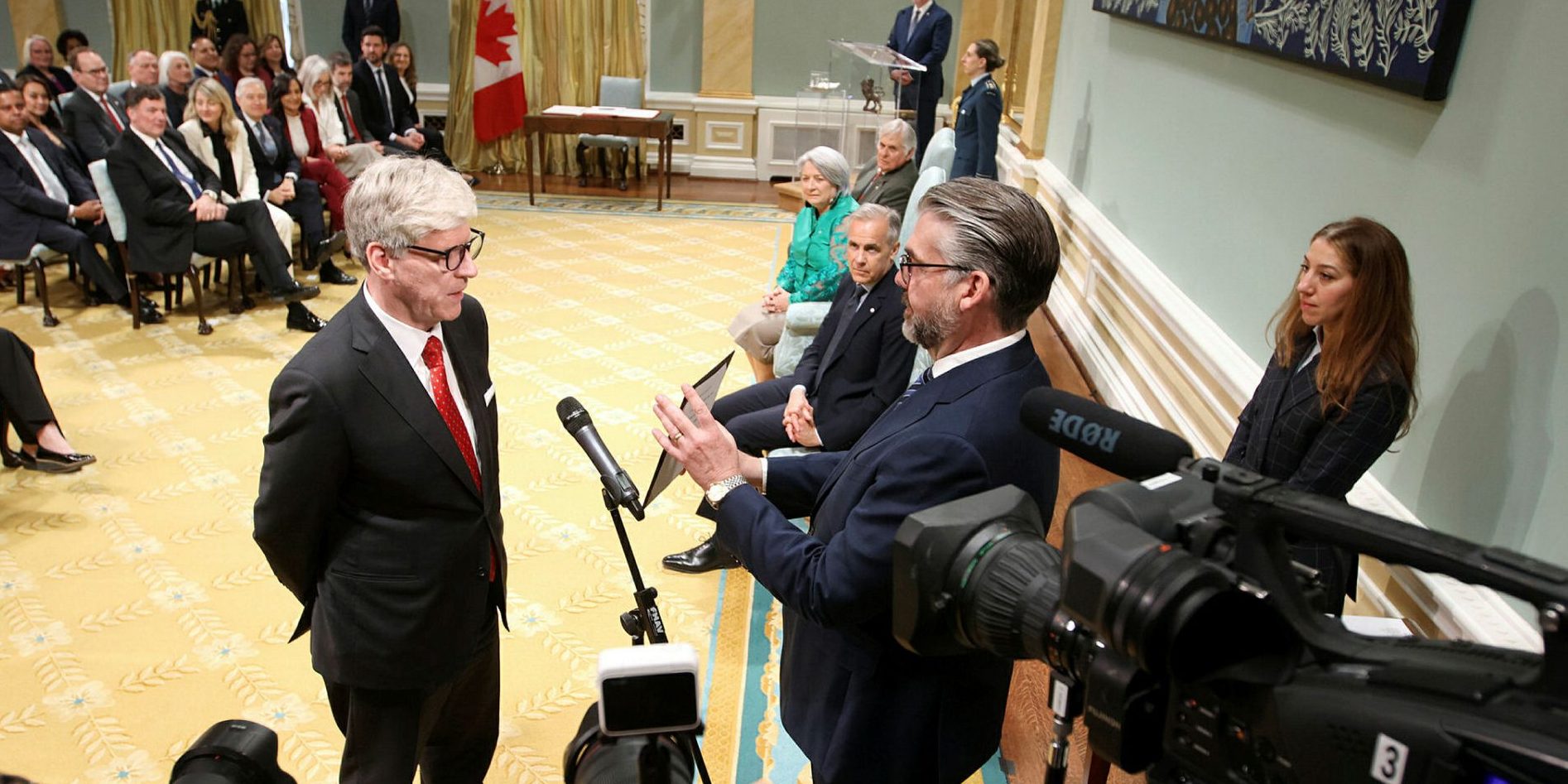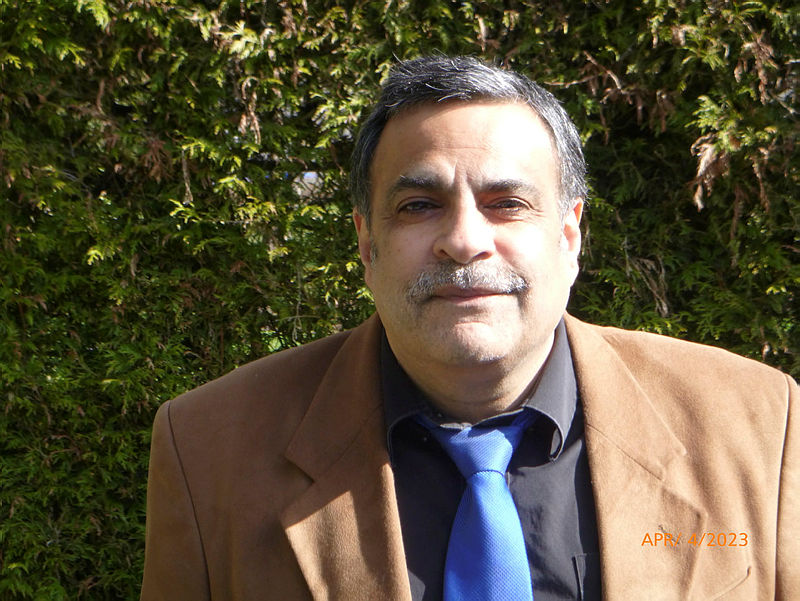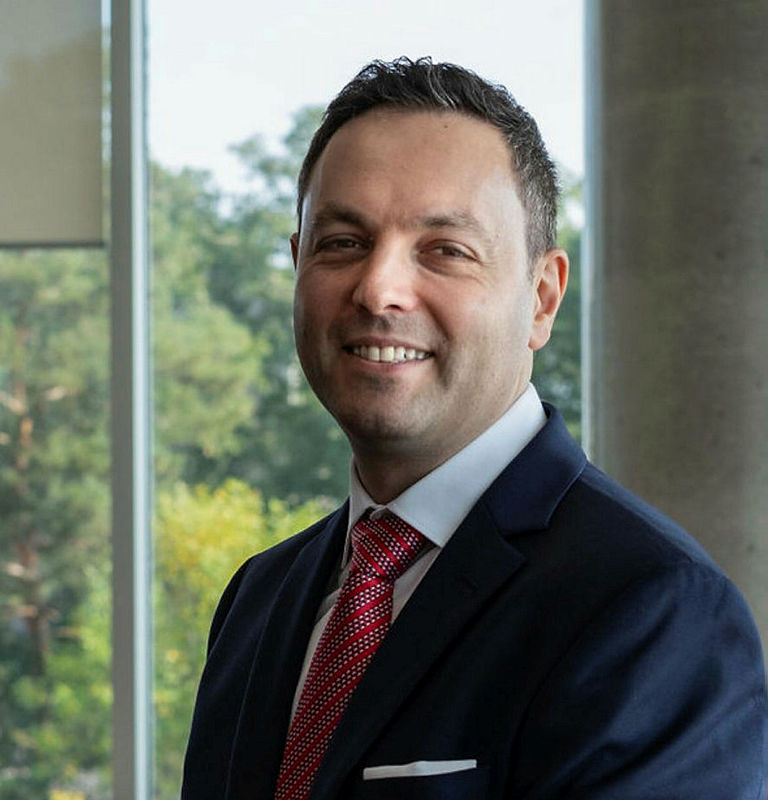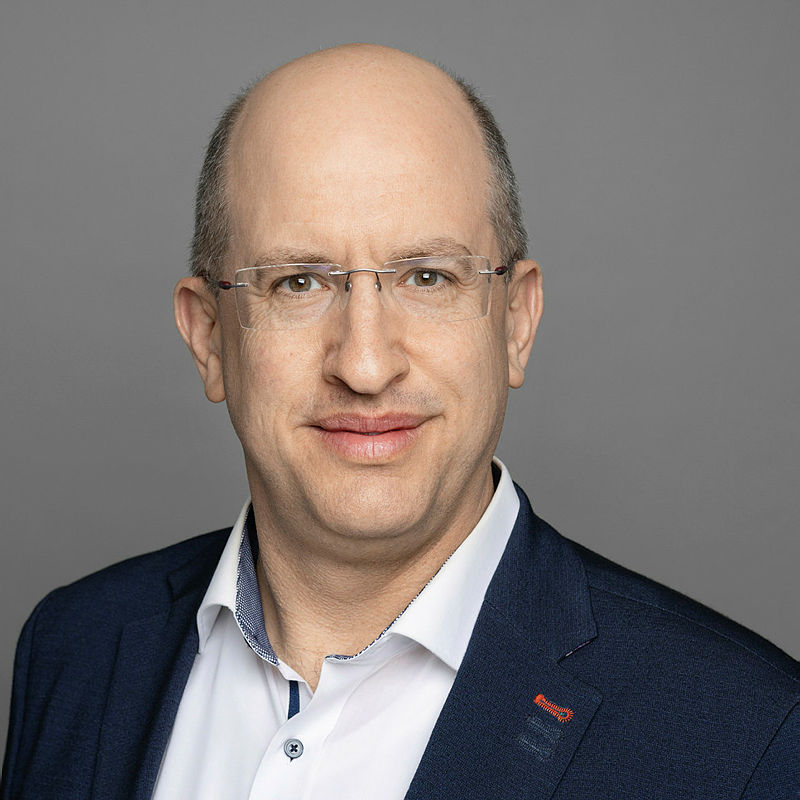Energy Minister Hodgson has experience with moving big projects, but some sector experts question plans to build up conventional energy alongside renewables

Some experts have concerns about whether plans by new Energy Minister Tim Hodgson to build up Canada’s conventional energy sector alongside the clean energy sector is the right direction for Canada, but all agree he has a strong background and experience with moving forward on big projects.
“When Minister Hodgson says Canada can be an energy superpower, he’s including fossil fuels and clean energy all in one envelope, like [Prime Minister Mark] Carney does. But that simply doesn’t make sense,” said Anil Hira, a political science professor at Simon Fraser University and lead researcher for the university’s Clean Energy Research Group.
“My main concern, and I think the concern that a lot of people who study this sector, is that Canada is just not moving fast enough because we continue to subsidize and support fossil fuels. We are misallocating those resources that could be better used to fund and accelerate our transition to clean energy.”
Hodgson (Markham-Thornhill, Ont.), a first-time MP elected on April 28, assumed responsibility for the Energy and Natural Resources cabinet role on May 13. He is a former managing director—and later CEO—for investment banking firm Goldman Sachs. He is also the former chair of Ontario utility giant Hydro One Ltd., is ex-vice-chair of the Ontario Teachers’ Pension Plan, and is a past board member of Calgary-based oilsands producer MEG Energy Corp.
His time with Goldman Sachs, between 1990 and 2010, overlapped with when Carney (Nepean, Ont.) worked for the company between 1988 and 2003 in various roles, which included as managing director of investment banking. Hodgson more recently served as a special adviser to Carney at the Bank of Canada between 2010 and 2012, while Carney was governor.
Hodgson outlined his vision of making Canada an energy superpower by taking advantage of both conventional and clean energy in a speech at an event hosted by the Calgary Chamber of Commerce on May 23.
“Every barrel of responsibly produced Canadian oil and every kilowatt of clean Canadian power can displace less clean, riskier energy elsewhere in the world. Our exports can help our allies break dependence on authoritarian regimes and help the world reduce our emissions,” said Hodgson during the event. “And by working with the energy sector to make investments that fight climate change, we can get more barrels to market while cutting carbon emissions.”
Hodgson also talked about the importance of fast-tracking energy projects of national interest, adding that—rather than five-year reviews—decisions would come in two years for all projects.
During the Throne Speech on May 27, King Charles III also talked about speeding up approval timelines, and promised creation of a Major Federal Project Office to reduce approval schedules for nationally significant projects from five years to two. He added this office would accelerate project approvals “all while upholding Canada’s world-leading environmental standards and its constitutional obligations to Indigenous Peoples.”
Hira argued that the federal government has historically had a fiscal policy that depends on oil and gas revenues, and therefore it is very difficult—both politically and economically—to roll back conventional fuels.

“What they really need is a plan to start to reduce our dependency on fossil fuels revenues,” he said. “There is a flurry of new reports that suggest that these carbon capture and storage projects … are never going to produce the kinds of revenues that are required to make them viable. There is increasing skepticism about them, as well as increasing information about the escalation of issues with methane coming from natural gas. In carbon capture and storage, it’s a way for the fossil fuel sector to continue its business as usual, while holding up this kind of phony shell of legitimation and justification.”
Hira argued that, instead of subsidies for fossil fuels, Canada should prioritize the critical minerals sector, and projects such as the East-West electricity grid promised by Carney in his election campaign platform.
“The fact that B.C. can’t easily sell hydropower—or Quebec or Manitoba can’t easily sell hydropower—to Ontario means that Ontario is taking a much more costly route in terms of reviving its nuclear industry. [Ontario] can have clean energy at a much cheaper price if we simply get that energy, that electricity, from Quebec and Manitoba,” he said.
Daniel Rosenbloom, an assistant professor and Rosamond Ivey Research Chair in Sustainability Transitions with Carleton University, told The Hill Times that the Liberal government will be navigating the largest economic transformation since the Second World War, and the choice facing Canada’s energy policy can be summed up as “planting seeds or grasping at straws.”

“On the one hand, [it’s about] how to build up a new industrial base around net-zero opportunities and those opportunities that will remain resilient in a climate-constrained world,” he said.
“On the other hand, investing in decarbonizing the oil sands and maintaining Canada’s position in an industry that is set to decline. That’s the core contradiction that has been underlying the Canadian economy for some time now, but … has come to the forefront in the rhetoric that has been used by the current government in this notion of becoming a superpower in both areas, in both clean and conventional energy.”
Fernando Melo, federal director of policy and government affairs for the Canadian Renewable Energy Association, told The Hill Times that he thinks Hodgson is “definitely up to the role,” arguing that his experience with Hydro One gives the new minister familiarity with the complexities of getting major electricity projects built.

“He’ll understand how, essentially, business decisions are made on these, so that’s going to be really critical because … isn’t easy, necessarily, or intuitive to grasp what it takes to get the final investment decisions on projects like these,” said Melo.
“I spend my time thinking about what’s going to get renewable electricity and energy storage project built, and there’s a variety of different things out there that work or won’t work. And ultimately, in Canada, our energy projects … don’t really get built by the government; it’s private sector investments and private sector decisions. So, I think it’s going to be interesting to see … ultimately, what the private sector does with those investments.”
Craig Watt, vice-president of operations for Enserva, a national trade association representing Canada’s energy service, supply and manufacturing sector, told The Hill Times that the most significant challenge Hodgson will need to navigate is an “entrenched public service direction that’s been in malaise” for more than a decade in Canada.

“I think the prime minister and Minister Hodgson have said they’re determined to get projects built and move things faster than we’ve seen. They’re going to need to work really hard to push through that ‘the way we do things around here’ mentality,” said Watt.
“We have developed, as a country, a global reputation of not being able to get projects built, and that in itself is going to be a challenge because, if you’re going to get a project built … that capital only comes from the private sector when they believe that there’s a chance of success at the other end of the process.”
When Hodgson appeared at the Calgary Chamber of Commerce event on May 23, Watt said the minister struck him as a serious individual with a background in energy, negotiating and public service, and who understands about getting large projects underway.
During the event, Hodgson proudly spoke about one of his first major deals with Goldman Sachs: getting the Alliance Pipeline off the ground—a natural gas pipeline built in 1999 and 2000 that runs from north-western Alberta and north-eastern British Columbia to Illinois in the United States.
Watt said getting the pipeline project across the finish line gives him confidence in Hodgson as Energy minister.
“That project was 18 months in the regulatory review process and a little over two years to build from start to finish. We haven’t seen that since. If we’re going to hit the timelines [Hodgson and Carney] are talking about on large projects, we need to go back to that kind of thinking. He seems to have an understanding of what that could look like,” said Watt.
In regard to Hodgson’s statement about building both conventional and clean energy resources, Watt said the minister is on the right track.
“[Hodgson is] acknowledging the reality that we’re seeing, not only in Canada, but globally, that as we’re building out our capacity in renewable energy … it’s underpinned by the conventional, the traditional oil and gas. Finding ways to do that more efficiently and more environmentally-friendly is a daily job for our members and for the industry. But it’s an ‘and’ piece. It’s not an ‘or,’” he said.
Joanna Kyriazis, director of public affairs for Clean Energy Canada, said the biggest challenges facing Hodgson include improving affordability as households struggle with high cost of living and tariffs increasing the cost of doing business, enhancing energy security amid geopolitical conflicts and trade tensions, and improving Canada’s economic competitiveness during an evolving relationship with the U.S.
Kyriazis argued that pursuing clean energy is the best path to achieve those objectives.

“Our research at Clean Energy Canada also consistently finds that switching to clean energy options like electric vehicles and heat pumps save Canadian families money, and that’s even when you’re factoring in the upfront costs of buying and installing them,” she said.
“In this quest to diversify our trading partnerships, we found that our 10 largest non-U.S. trading partners all have net-zero commitments and carbon pricing systems in place … and then they also have domestic electric vehicle requirements that are reshaping their car markets and weaning them off of fossil fuels.”
Kyriazis described Hodgson as someone with a “great get-things-done attitude,” and with his finance background, he could have a keen eye to identify cost-effective nation building projects with long-term value for Canada, according to Kyriazis.
“If the Carney government wishes to pursue an industrial strategy that will also fight climate change—and if the Carney government is looking for projects that connect Canadians, diversify our economy and help us export products to new markets—clean energy projects are the type of projects that best fit that bill,” said Kyriazis in an email follow-up on May 28.
Keith Brooks, program director for Environmental Defence, told The Hill Times that he thinks there will be challenges for the Liberal government in trying to square an increase in conventional energy production with the commitments around fighting climate change.
“Oil and gas is the largest source of emissions in Canada, and increasing the production of oil and gas is almost certainly going to increase the emissions there,” he said.
When it comes to building up the conventional and renewable energy sectors, Brooks said “you can’t have it both ways”
“Early indications seem to be that [Hodgson is] interested in conventional energy and interested in carbon capture. We would hope that, though, as someone with a financial background, he takes a serious look at the fundamentals of those projects,” said Brooks.
“Carbon capture is a very expensive climate solution, and … it doesn’t even pretend to get close to net-zero. So, it looks like it’s a dead-end solution to me, as well.”
jcnockaert@hilltimes.com
The Hill Times
Canadian renewable energy statistics (2019 to 2024)
- Canada’s total wind, solar and storage installed capacity grew 46 per cent between 2019 and 2024, including nearly five gigawatt (GW) of new wind, two GW of new utility-scale solar, 600 megawatt (MW) of new on-site solar, and 200 MW of new energy storage.
- Solar energy capacity (utility-scale and onsite) grew 92 per cent between 2019 and 2024.
- Wind energy capacity grew 35 per cent in that time frame.
- Energy storage capacity grew 192 per cent.
- Total wind, solar and storage installed capacity is now more than 24 GW, including over 18 GW of wind, more than four GW of utility-scale solar, 1+ GW on-site solar, and 330 MW energy storage.
- Canada now has 341 wind energy projects producing power across the country.
- This country now has 217 major solar energy projects producing power across the country.
- There are now nearly 96,000 onsite solar energy installations across Canada.
Source: Industry data report released by the Canadian Renewable Energy Association on Jan. 30, 2025.






 LICENSING
LICENSING PODCAST
PODCAST ALERTS
ALERTS













